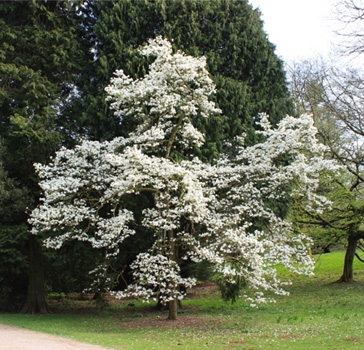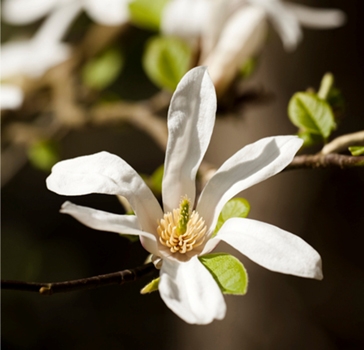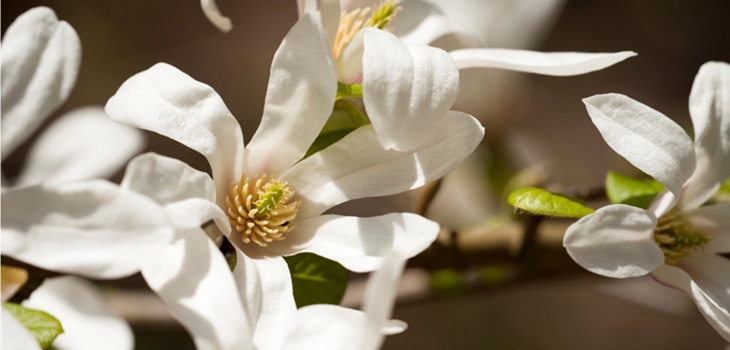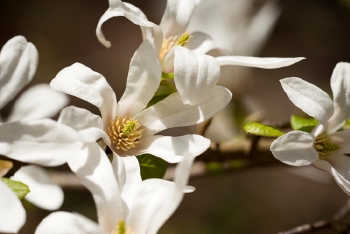Tree of the month: Magnolia kobus
Magnolia kobus
This elegant tree from Japan and South Korea is our pick for Tree of the Month.
April is a magnificent time to come and view magnolias here at Westonbirt. One of our most delicate magnolia blooms are those of Magnolia kobus, which bursts with creamy-white flowers in late March-early April.

During this time, the tree’s downy buds open, releasing fragrant, vase-shaped flowers at the end of leafless branches. As with all magnolias, the flowers do not have petals, but instead have tepals, a term used when there is no clear distinction between sepals or petals. The inner tepals, usually numbering between 3-6, tend to stay upright and are often tinged pink at the base. However, the outer 3 tepals often fall early, so can be easily missed.
Magnolias evolved around 95 million years ago, when dinosaurs walked the earth and before bees existed. The flower reflects this ancient origin, with tough carpals (the female reproductive part), which can withstand munching from beetles, their original pollinator. You may notice that M. kobus flowers looks like those of M. stellata, and M. salicifolia, also found nearby in the Old Arboretum. This is no coincidence; they are in fact closely related.


During the flowering period, oval-shaped leaves which taper at the base, start to emerge. The leaves which often have a pointed tip, reach 8–15 cm long, turning a dark green on top. Later in the season, cone-shaped fruits made up of follicles (dry cavities containing a seed) develop. These are around 8cm long, ripening and bursting with bright red seeds in autumn.
This extremely hardy tree really packs a punch- the specific epithet kobus is named for the Japanese vernacular name kobushi, the word for ‘fist’, possibly named for the shape of the opening flower buds. The generic name Magnolia was named to honour the French Botanist Pierre Magnol (1638- 1715), the first person to use the term ‘family’ to group plants with shared features.

This species displays a varied habit within its natural range and can be found as a multi-stemmed shrub or a tree growing to 20m tall. While they can grow large, M. kobus is not ideal for the impatient grower. They generally put on growth slowly and seed-grown trees can take up to 25 years to reach maximum flowering potential. Here at Westonbirt our patience has been rewarded with several notable specimens that will be reaching their flowering peak in mid-April.
Several of our younger trees were grown from wild seed collections in the forests of Hokkaido and Honshu in Japan. Beautiful mature specimens can be found in Silk Wood along Willesley and Waste Drives, and besides Main and Circular Drives in the Old Arboretum.
Find Magnolia kobus on Westonbirt's Arboretum Explorer...
Photo credit: Anne Gilbert
